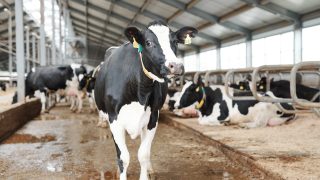
EPA to Publish Slaughterhouse Water Pollution Standards Following Lawsuit
Improved standards will help protect wildlife in impacted areas
WASHINGTON, D.C. — On March 1, the U.S. Environmental Protection Agency (EPA) announced its intent to publish updated water pollution control standards for slaughterhouses, following a lawsuit filed by a coalition of community and conservation organizations late last year. The proposed standards are due before the end of 2023 and will be finalized by 2025.
The EPA published the rulemaking timeline as part of a proposed consent decree that would resolve the community and conservation groups’ lawsuit, filed by Earthjustice and the Environmental Integrity Project on behalf of the Animal Legal Defense Fund, Cape Fear River Watch, Rural Empowerment Association for Community Help, Waterkeepers Chesapeake, Center for Biological Diversity, Environment America, Food & Water Watch, The Humane Society of the United States, and Waterkeeper Alliance.
The coalition filed the lawsuit under the Clean Water Act against the EPA after the agency failed to revise federal water pollution standards for slaughterhouses that discharge processed wastewater into waterways or facilities that send wastewater to sewage plants before discharging into rivers and streams that can harm wild animals living and roaming in those areas. These standards haven’t been updated since at least 2004, and more than a third of slaughterhouses operate under guidelines from the 1970s. The Clean Water Act mandates that the EPA set such standards and review them annually to determine whether they comply with the latest in pollution-control technology.
“Allowing slaughterhouses to operate under outdated pollution limits is just one more way the federal government has subsidized industrial animal agriculture,” said Animal Legal Defense Fund Managing Attorney Amanda Howell. “We hope that EPA’s new standards will ensure that communities and animals living downstream of slaughterhouses are no longer burdened by this industries’ cost-saving measures.”
Technology that can reduce pollution exists, and the EPA has recognized slaughterhouses are one of the largest industrial sources of nitrogen water pollution without updated standards.
But instead of protecting the environment and public health, the federal government has been giving slaughterhouses, which kill more than 8 billion chickens, 100 million pigs, and 30 million cows annually, a free pass by allowing them to operate under ineffective and outdated water pollution standards. These plants discharge contaminants such as blood, oil, grease, and fats, as well as nitrogen and phosphorous pollution. The costs of their pollution are borne largely by communities with lower incomes whose drinking water is jeopardized, as well as neighboring wild animals who depend on clean water to survive.
Sign Up!
Join the Animal Legal Defense Fund's email list to stay up to date on lawsuits, legislation, and regulations affecting animals.
Focus Area
How We Work
Recent News
-
City of Sturgeon Agrees to Pay $500,000 in Settlement Over Police Shooting of Blind, Deaf Dog
The lawsuit argued the lethal force used violated the 4th amendmentNovember 14, 2025 Press Release -
Justice for Cat Victims in Elkhart County
We are looking for someone who has a connection to their legislators who would be willing to help us contact them and ask for their support and leadership on a vital bill. -
California Governor Signs Animal Protection Bills into Law
The Animal Legal Defense Fund sponsored two bills protecting cats and wild animalsOctober 21, 2025 News




